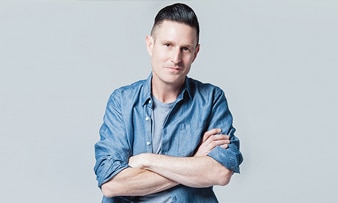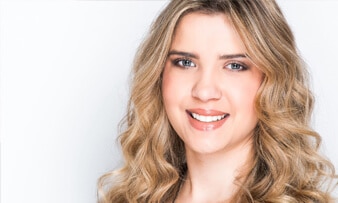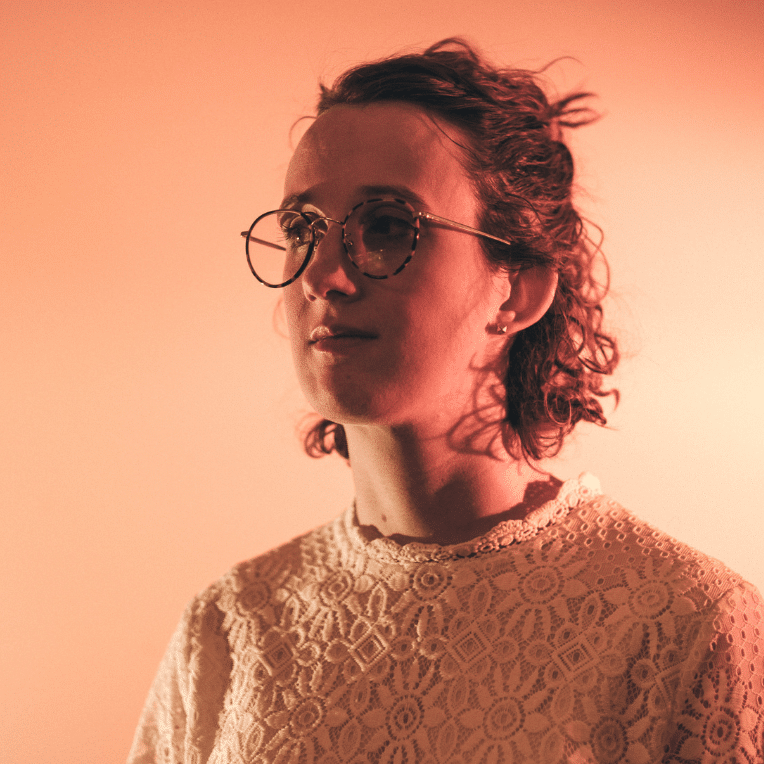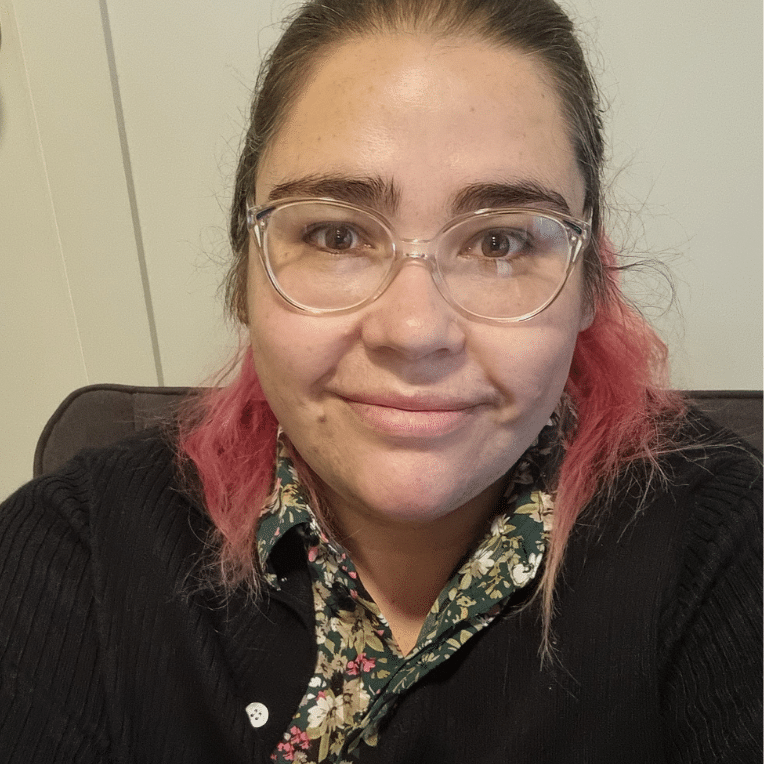Share this episode on
This episode of Grow Bold with Disability is growing bold and pain management.
Our guest is Australian comedian, podcaster, writer, and television presenter Wil Anderson. We talk with Wil about how he manages his chronic pain, access to medical marijuana and his goal of building a better, more inclusive future and more.
Produced by: Black Me Out Productions
Additional reading
Additional information
View transcript
Growing Bold and Managing Chronic Pain
Pete: Welcome to the Grow Bold with Disability podcast brought to you by Feros Care. A podcast dedicated to smashing stereotypes and talking about the things people with disability care about most to help us live bolder, healthier, better connected lives.
I am journalist Pete Timbs
Tristram: and I’m Tristram Peters. I work for disability service directory, ClickAbility and am a wheelchair user living with spinal muscular atrophy.
Pete: Today’s episode is Grow Bold with Disability is growing bold and pain management. My guest is Australian comedian, podcaster, writer and television presenter Wil Anderson.
In this episode, we will discover how growing up on a dairy farm in Sale, Victoria instilled in Wil the “she’ll be right”
attitude, especially when it comes to “attending to those medical things in a way that I should”
. How his love of running ultimately forced his hand to visit a doctor and what the doctors told him. Wil, welcome to Grow Bold with Disability.
Wil: Thank you very much for having me. Yes, I am actually feeling not too bad today, so it’s a good day to do this. So, I am not gonna whinge like an old man that my hip is hurting you’ll be pleased.
Tristram: Full permission, you can if you want to. It’s all good.
Wil: I know, but it’s funny, isn’t it, you know, because even the name of your podcast. it’s the categorization of what I have, which is osteoarthritis in my hips. It’s chronic pain and I’ve had it for, you know, 13 or 14 years now. But I was asked by somebody recently, somebody who I respect very much, Kurt Fearnly. Who people would know is like one of Australia’s greatest ever wheelchair athletes. And he asked me whether I considered my hip pain and the way that it has, you know, disabled me as being a disability. And I said to him, I never really have you know. It wasn’t how, in my mind I categorized, and I wasn’t quite sure why. And he challenged me on that point. He was like, well, it’s something that has, you know, severely impacted your life in a myriad of ways over a big period of time. It would be fine for you to categorize it that way if you want to, but I do not know why. And maybe, you know, it was mentioned a little bit in the introduction. But that attitude of growing up on that dairy farm. And having that “she’ll be right”
attitude. I really have always categorize it probably a little less and I’ve diminished the impact that it has on my life a little more than I probably should have for my good health.
Tristram: Yeah, sure, sure. So, when it comes to Osteoarthritis, tell us about the pain specifically. What triggers it?
Wil: Well, okay, so my hips are bone on bone. So, if people want to imagine, basically everybody has a hip and hip socket and about 10% of the population have just a genetic difference, right? And basically, it means that where that little cup around like your hip socket comes in at the end like a crooked finger and that is fine. You can just kind of live your life with that unless you happen to do anything that makes you lift your leg over 90 degrees. So, what I have is mostly found in people who I guess did karate or played in my case AFL football where you’re kicking a ball above 90 degrees. Because what happens as soon as your hip socket goes above 90 degrees, it starts to rub on that little bit that comes in. And so, over the years of doing that and then progressively just doing other things that involve your hips, which is basically anything that involves standing up. What happens is they just smashed into each other to the point where both of my hips are essentially bone on bone. So, if people can imagine anything that you would do, you know, jog, run, jumping up and down, being in a confined space for a period of time. Any of those sorts of things tend to really impact the pain of an injury like that.
Pete: So, is it a genetic thing? Were you born with this? Or is it, of course, from your lifestyle kicking footies and so forth?
Wil: Well, no. So, it’s a genetic disease, but it’s exacerbated by lifestyle factors. I think that’s probably true of a lot of things right in that you have some, you know, genetic propensity to, you know, be susceptible to that thing. You know, you might be susceptible to type two diabetes that’s in my family. But there are lifestyle decisions you can make to manage it – something that you know causes you more or less pain and grief in your life. And it’s the same with this. A lot of my treatment I don’t take a lot of drugs for it now. I take a slow release, anti-inflammatory. So, like a 12-hour anti-inflammatory and I take that at night. I don’t take a painkiller during the day. I’ve managed it to the point where at its worst, there was a period of time when I was in America, where my hips and back were so bad, my back as a result of the hips, was so bad that to get half an hour of sleep, I would then have to get up for an hour and walk from one end of my apartment to the other end just to stretch myself out enough that the pain would go away enough. I was on Vicodin and hard-core pain medication. At that stage, I would have to do that just so I could try to get another 20 minutes or half an hour of sleep and then get up again because the pain would be so bad to just, hobble across my apartment to try to stretch it out again, enough to get back to sleep. So that’s the worst end of it. But you get me today on a day where I don’t take drugs during the day for it at all. And I only take this, you know, slow release, anti-inflammatory at night to help me sleep through the night basically without the pain. So, I’m in a pretty good place with it at the moment.
For somebody who, like my hips are bad enough that I could walk into a surgery tomorrow and get both of them replaced. There’d be no doctor who would argue with the fact that and that is where eventually this story ends, like both of them will have to be replaced. But in the meantime, I’ve been trying to manage my pain through lifestyle changes.
Pete: So why have you been so averse to going and getting the medical help you obviously need?
Wil: You know, I really like when I say I’m managing it, I should be getting my hips replaced. Like one of my good friends has just recently got his hip replaced. He’s been giving me, sending me photos of every aspect of it in a real sort of heavy push. Because his hips probably weren’t as bad as my hips, and he’s just got them done, and I should have got mine done. So, this is not even a legacy issue for me. It’s not even really in my past. I really do tend to put my own physical health on the back burner when it comes to my life priorities. It’s not that I don’t value my own wellness and health. It just seems to slip down the rung of priorities when there’s other things that are more important. What I see as being more important to do. It’s not something that I really love about myself, and it’s certainly something that I think I’ve got a little bit better at over the years. But when I first had this, I was a pretty fit guy, you know, I was probably running 10, 12 kilometers a day, which I did not know at the time, but was completely making the problem much worse than it needed to be. Because basically at that stage I was bone on bone. So can you imagine? I’m going out 12 kilometers a day running on these bone-on-bone hips and I’m coming back and feeling sore in my back and feeling sore in my hamstrings and all these sorts of related problems. But I was treating them. So, I would go to the physio, or I would go and get somebdy to treat the symptom. But I never really even imagined that there was a bigger cause than that. That there was a bigger problem. So I went probably through about two years.
I would say probably two years minimum of, you know, seeing every osteo and physio and chiro and getting cupping and acupuncture and all these things sort of treating these related symptoms. But none of them were me going and, you know, getting in a proper big scientific machine at the doctors and you know having them have a decent look at what was going on. So, once they identified that, and it was during a routine medical. I have to do a yearly medical for Gruen and for our insurance, and I was having a medical, and my doctor was just like, I think there’s a problem with your hips and no one had even really, ever, you know, suggested that to me. Like I was in my early thirties, there was no reason to believe that you would have, you know, hip problems. But then I went and got all the tests done, and it turned out that yeah, my hips were already damaged beyond the point of there ever being a really good solution to managing them. So, I immediately had to stop running that day. I haven’t pretty much gone for a run since that day.
Tristram: Was it in many ways, a relief then to get a diagnosis? Or was it a bit of a shock to the system?
Wil: No, it was a relief. It’s good to know. I mean, that’s the irony, right? Like because when you put off these things, like so many times, men in particular, it seems are hesitant to seek medical attention and so many times the thing that they are experiencing is only made worse by the fact that they have put off the treatment or the identifying what it is. If I had known what it was five years earlier, I might still be running now because there would have been a way that I could have, you know, mitigated and managed it to a point where I could still do a lot of the things that I’ve had to give up over the last decade. So no, my reticence or my hesitance for not prioritizing my health has definitely been, you know, partly responsible for how bad it became for a while.
Pete: So, during this time, you are self-medicating. What were you using?
Wil: Well, I was living in America, so I had access to medicinal marijuana, which was fantastic. It doesn’t treat the really high-end pain was my experience. But for that sort of day today, like I said, now I take an anti-inflammatory to sleep during the night. Like in America, I could take the equivalent of like an edible or whatever to be able to sleep through the night that is even better for my overall health than taking this anti-inflammatory that I take every night. So, I had access to that. But also, I mean, I think over there your access to, if you have a legitimate injury, the access that you have to prescription drugs is terrifying. And part of the reason that I’ve tried to manage it in a healthier way is because I have something that even in Australia, doctors will write you prescriptions without question for some pretty hard-core stuff based on – if they see my X rays, I could basically go just give me whatever pain medication that you have. They will prescribe it to you and they’re not being, you know, negligent in their duties. They’re just trying to help somebody treat their pain. But I’ve also seen enough of my friends, you know, struggle with addiction problems to know that was not a healthy way for me to be, you know, operating in my life. So, I was the one who really chose that. I wanted to find a way to do it without constantly dragging myself with really hard-core drugs.
Tristram: Yeah, for sure. I mean, that’s obviously a big shift. When you moved back from California to Australia. Was that a difficult process for the pain treatment once you came back to Australia because, you know, what was accessible over there wasn’t here?
Wil: Well, so there’s two ways to answer that question. One is the completely honest way, which is it’s not entirely inaccessible in Australia. It’s obviously not legally accessible, although it is in some places now. So, I have a medicinal marijuana doctor in Australia, and I am able to get a prescription here in Australia. It is nowhere near as accessible or easy as it was in the US, but it is something that is now available in, you know, a few different areas of Australia. And there are very competent medical professionals working in this area now. So, there are a few places if people want to research them and if they feel like it might be helpful for them that do actually exist at the moment. Then there is the next level, which is a way that a lot of people, because there’s three million people, I think in Australia is the statistic I read recently that suffer from some kind of chronic pain. And you can’t tell me that the level of cannabis use in Australia, which is also quite high. In fact, you know, we’re up there are some of the biggest cannabis users in the world. Some of that’s got to be in the treatment of pain. It can’t just be that Aussies just like smoking bongs and playing PlayStation more than people in the rest of the world. There’s got to be an underlying thing there of people using it for pain management. So, I think the quicker we can get from it having to be a black-market thing where people have to not know the dose they’re going to get, not know the reliability, not actually get something that is specifically targeted to the pain or the condition that they have. Maybe you need something to help you sleep at night. Maybe you need something to get rid of your pain during your day, but you can operate.
We just don’t have access to those varieties of medications here in Australia. So, I mean, I’m a person who believes that cannabis should be legal, but that’s a broader conversation. I 100% believe that it should be legal for medical purposes. You know, the idea that we have this medicine that we just have just decided to make a moral judgment on more than a medical judgment just seems absolutely outrageous to me.
Tristram: Understandable. To touch on your point there as well that it, with a combination of other holistic treatments, for instance, you’re on anti-inflammatories as well, that is collectively looking at the broader picture of what can help people. It’s not just one thing, but it’s multiple different treatments. And that’s a message we’ve got to convey to as many people as possible, isn’t it?
Wil: Well, I think it’s about finding the mix, right? The idea with these things that there is one solution is probably the naivest way of looking at it. You have to find something that works for you. And no one’s pain is the same. You know, some people are like, I sleep fine, but I need pain management during the day. I’m the opposite of that. Um, if I don’t fly as often, then I feel better because flying is really bad for it because of the cramped circumstance and the travel and these sort of things. I find flying really bad. There are certain exercises that are really good for it, and there are certain exercises that are really terrible for it, you know? I can’t fix it all with exercise. I can’t fix it all with acupuncture. I can’t fix it all with cannabis. And I can’t fix it all with, like, you know, prescription medication. But some combination of those things can you go towards helping and getting you to a place where you can operate in a way that’s healthy enough.
Pete: Yeah, there seems there’s a lot of people pushing back against this whole sort of medical marijuana movement. What needs to be done? How can we get this across the line? Because people obviously need it.
Wil: Well, I just think pain as a general conversation is probably a good one to have. And it’s why I guess I agreed to do this even though sometimes I’m hesitant to. I feel very lucky in the life that I’ve had, and it always feels, you know, ungrateful to complain about anything. But I also realized, I think more as I get older, that if you don’t share your story, it also silences other people who don’t have access to telling their story. Sometimes your story can be told on behalf of other people. And as I said before there’s three million people in Australia who suffer from some kind of chronic pain. And I think chronic pain is one of those ones because it is chronic, because it is constant. If you break your leg or you have some injury that is very visible but also has a timeline on it, it’s almost easier for people to offer sympathy and help and understanding around that. Oh, you know, don’t worry about Gary. He’s got a broken leg. He’s dealing with that at the moment. Whereas if Gary’s pain is spread out every day and, you know, sometimes for a week he’s feeling great. But then the next week for no particular reason that Gary’s done anything wrong, he’s feeling terrible. I don’t think we are as equipped as a society to understand and manage and handle that style of pain. It’s too long for us. It’s too drawn out and we can’t quite categorize it. So, you know, there’s a lot of people out there clearly who have to deal with this every day. So even just that broader conversation around what it is that people are dealing with on a daily basis is probably a very good one to have.
Tristram: Yeah, absolutely couldn’t agree more. Wil, as you know, our podcast is called Grow Bold with Disability. And we always like to ask our guests what does growing bold mean to you?
Wil: Well, I mean, okay, so I think that what we all want really is the opportunity to live whatever it is that we want to do with our lives to the full. And, you know, there are always gonna be things that get in the way of that. But I guess what we want most is opportunity, you know, and that’s what I think about this holistic conversation. How do we create spaces for people who haven’t traditionally had a space for them? And it’s not just good enough for that space to be a parking space next to the shops or, you know, a few ramps into the building. We have to have legitimate conversations around, you know. And I think this is not just around disability, by the way, but any sector of society where somebody has not been traditionally represented because there’s been extra barriers in their way. So, I think that boldness for me is not, you know, necessarily even just knocking down barriers on behalf of yourself. But to be bold enough to try to create spaces for people who aren’t you. To knock down some barriers on behalf of other people that, to me, seems like the boldest thing you can do in 2021. In this world where, you know, we’ve seen a lot of the traditional structures that we’ve relied on be revealed as not as reliable as we were, you know, told they were. We have an opportunity to rebuild, and I think that if we are going to rebuild anyway, we might as well rebuild better than we were. And I think if we’re gonna be and this, to me is like a bold idea. So, I guess it’s why I’m going in this direction.
But the bold idea is, let’s make it better and the best way we make it better is we make it more diverse. And the best way we make it more diverse is that we realistically look at the barriers that are in front of people. Whether they be, you know, ability barriers in terms of your physical ability, your mental ability, you know, the colour of your skin. You know, the gender that you are rocking in your your life, all those things. Let’s just knock down some barriers and get us all in the same space and think that that’s going to be a better place than the one we had before when so many people were locked out of it.
Pete: Well, Mr Wil Anderson, thank you so much for joining us here today on Grow Bold with Disability podcast brought to you by Feros Care. And our listeners can find out more about Wil and pain management in the links provided in today’s episode show notes. Wil thanks so much for joining us today.
Wil: My pleasure. Thank you.
Pete: This podcast is brought to you by Feros Care, an NDIS partner delivering local area coordination services in Queensland, South Australia, and the Australia Capital Territory. Feros Care is a people care organization committed to helping people leave bolder lives. We call it growing bold and for over 30 years Feros has been making it real for both older Australians and those living with disability. To find out more head to Feroscare.com.au
View podcast disclaimer
The content and views discussed in this podcast series are those of the individuals involved. They are not necessarily condoned by, or, are the views of Feros Care or its employees.
Our Guest






